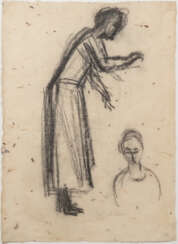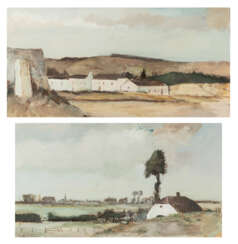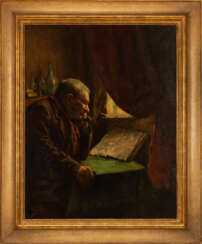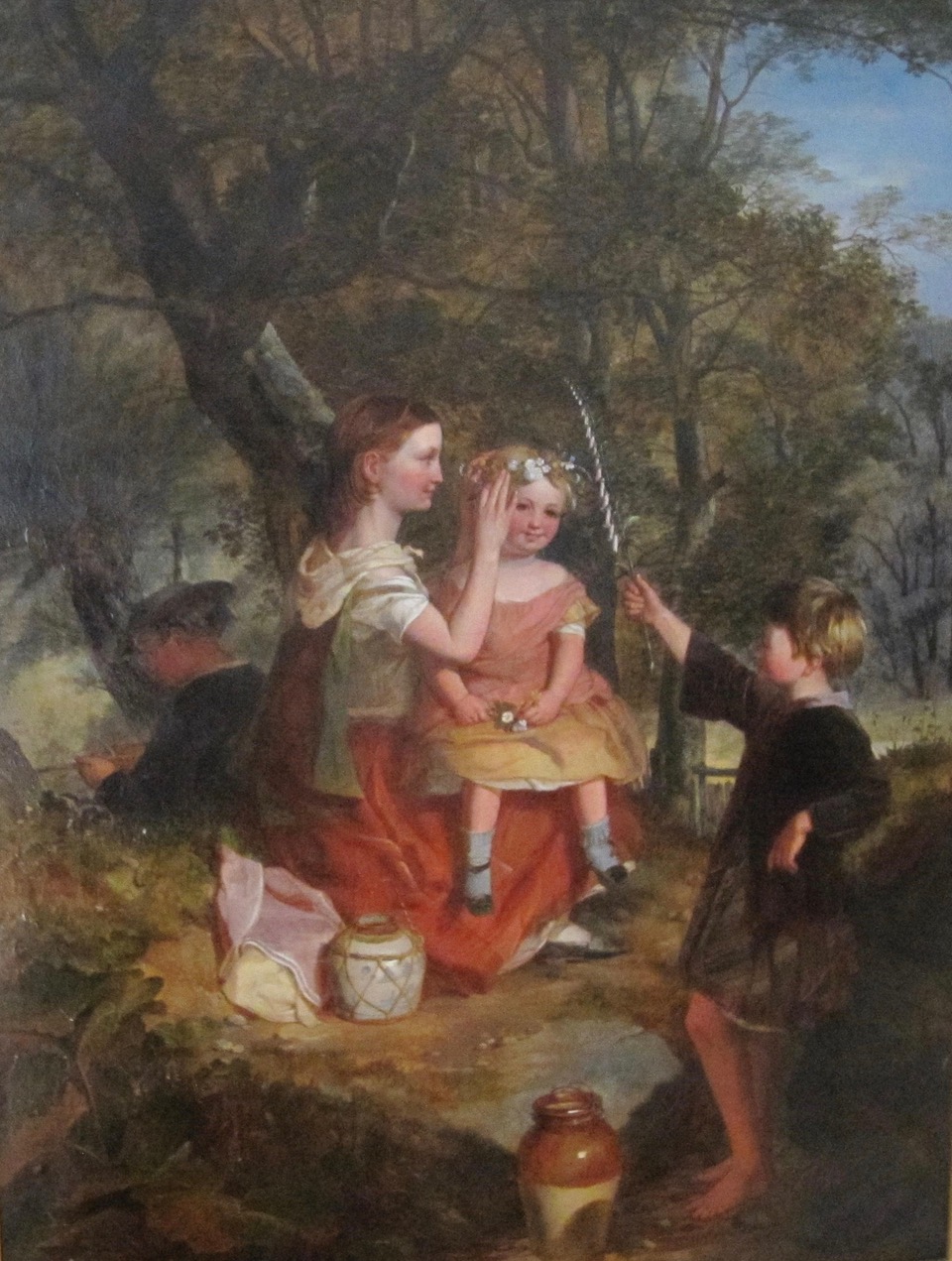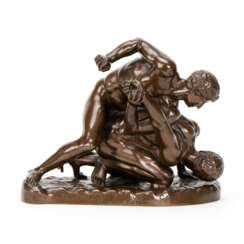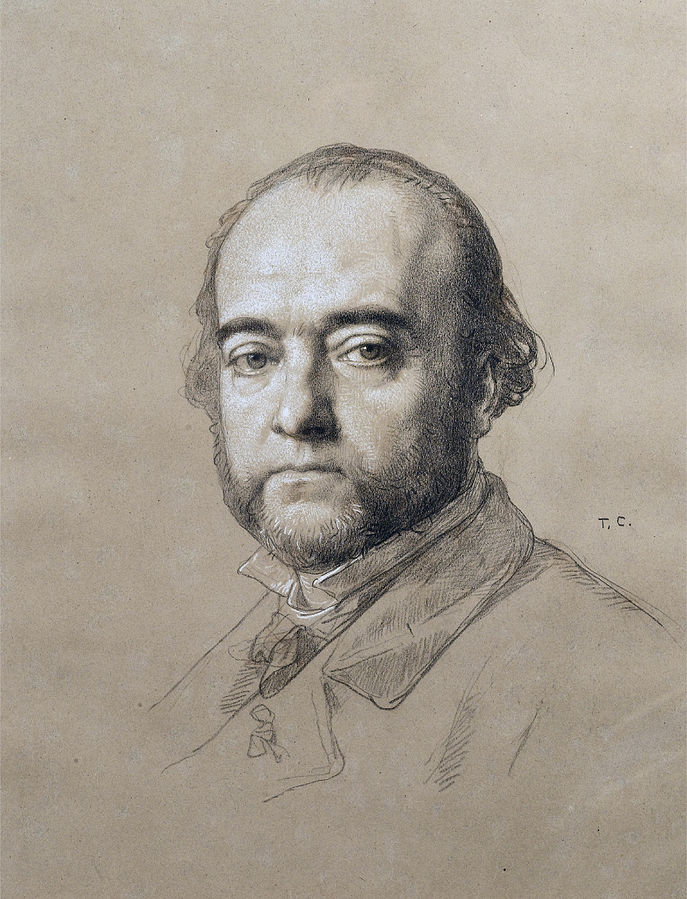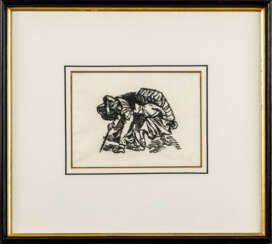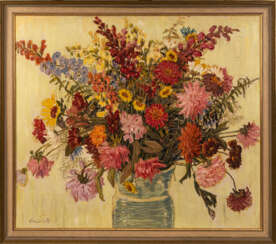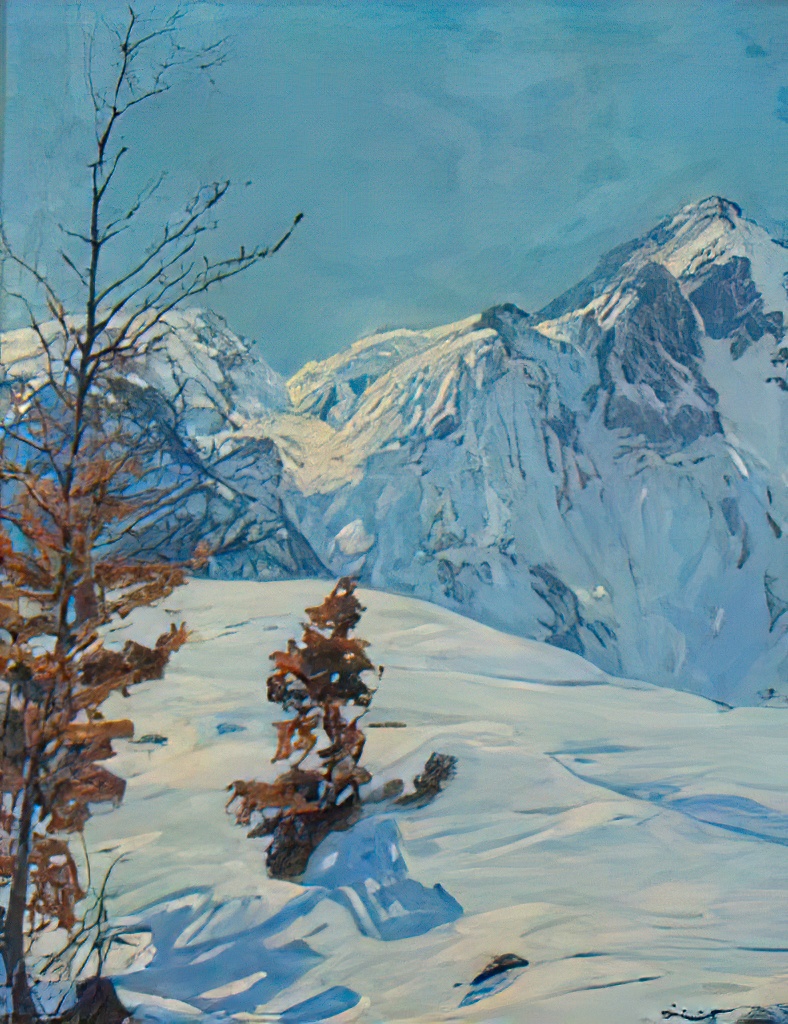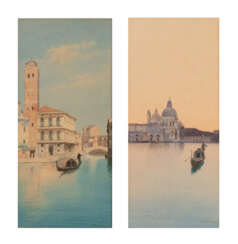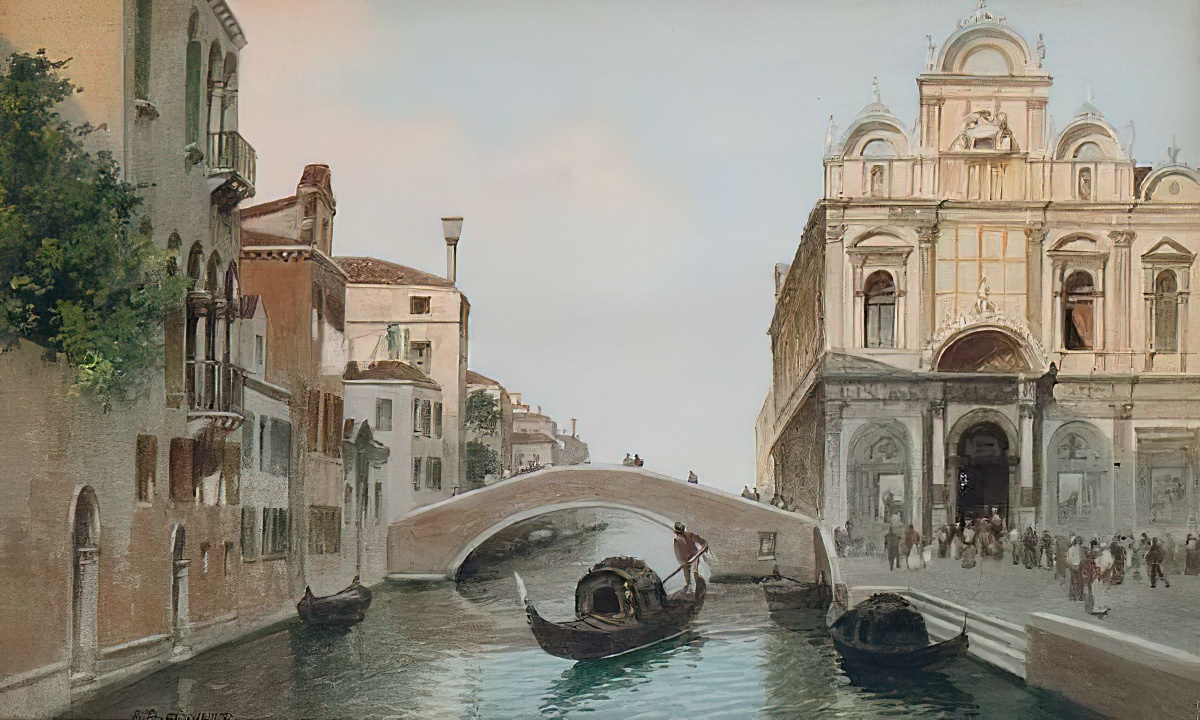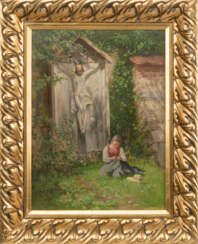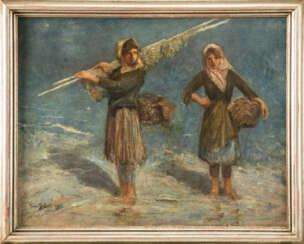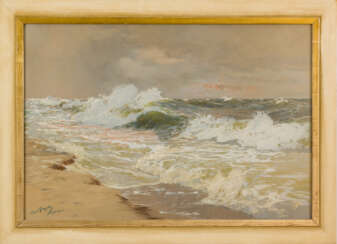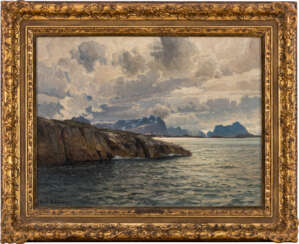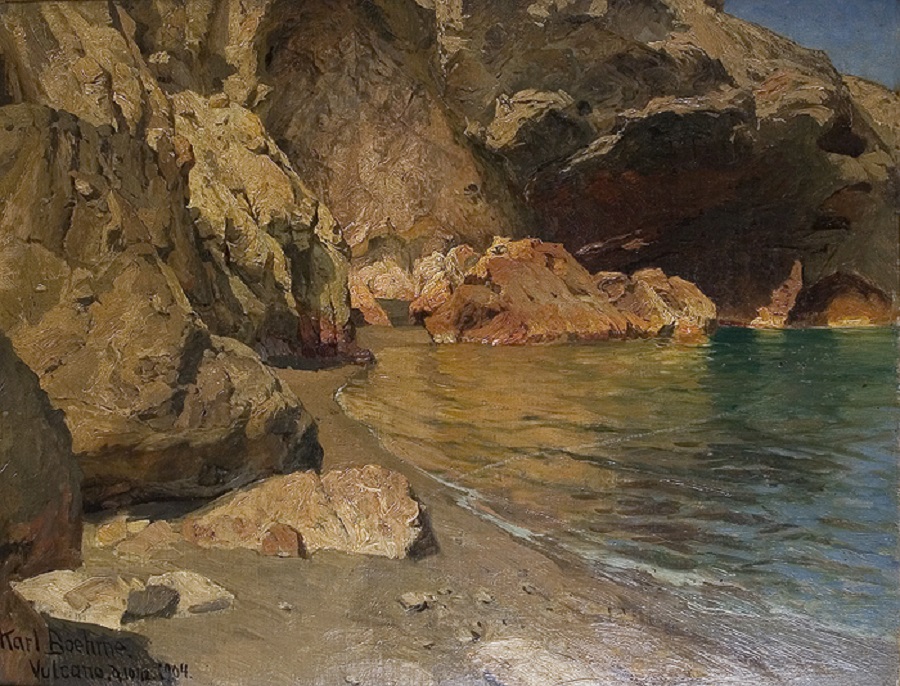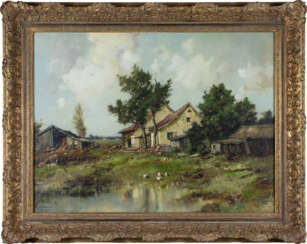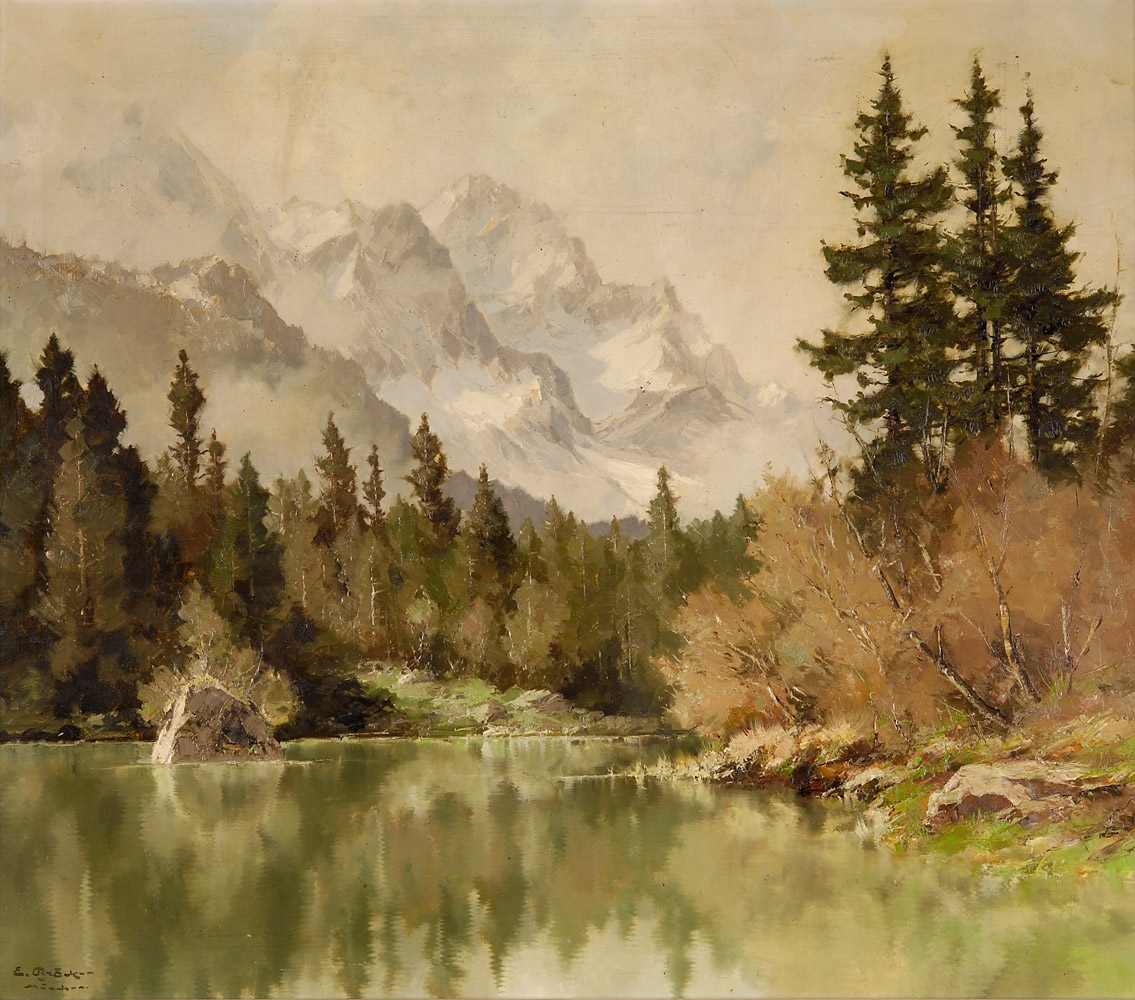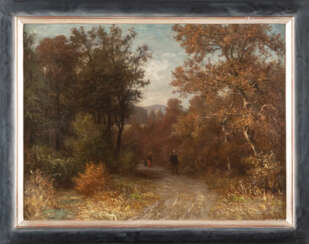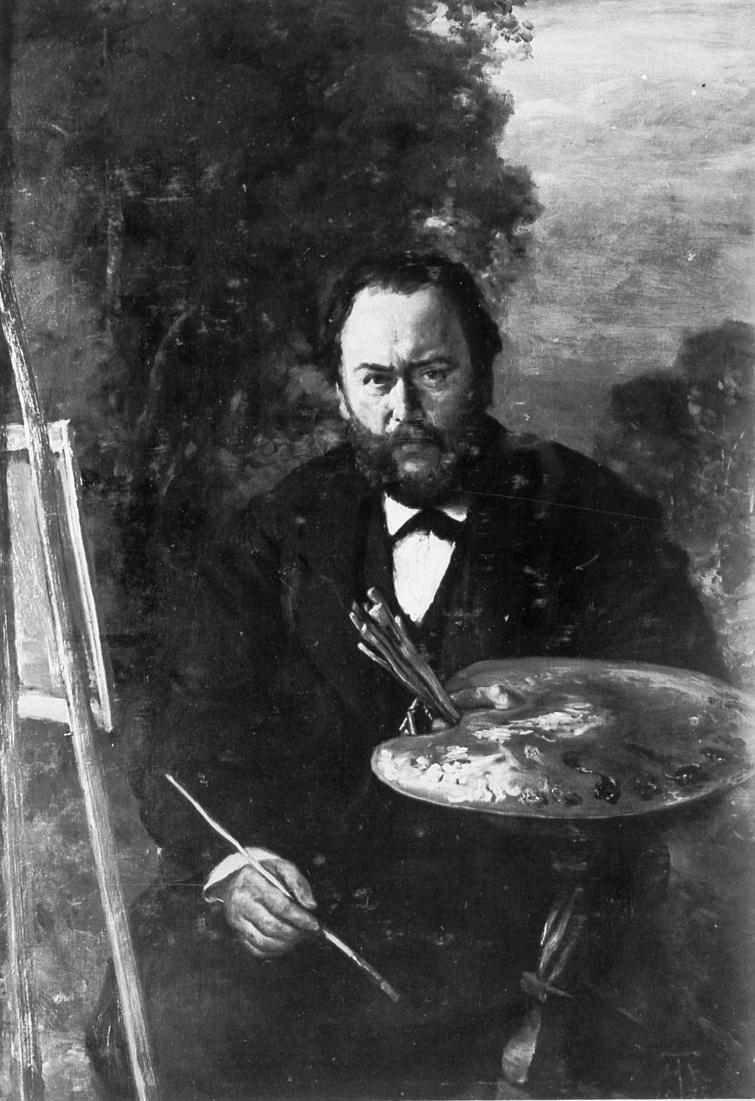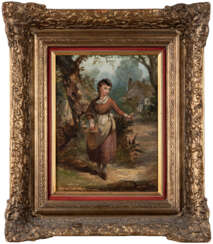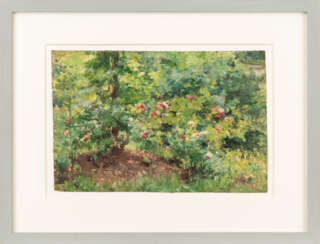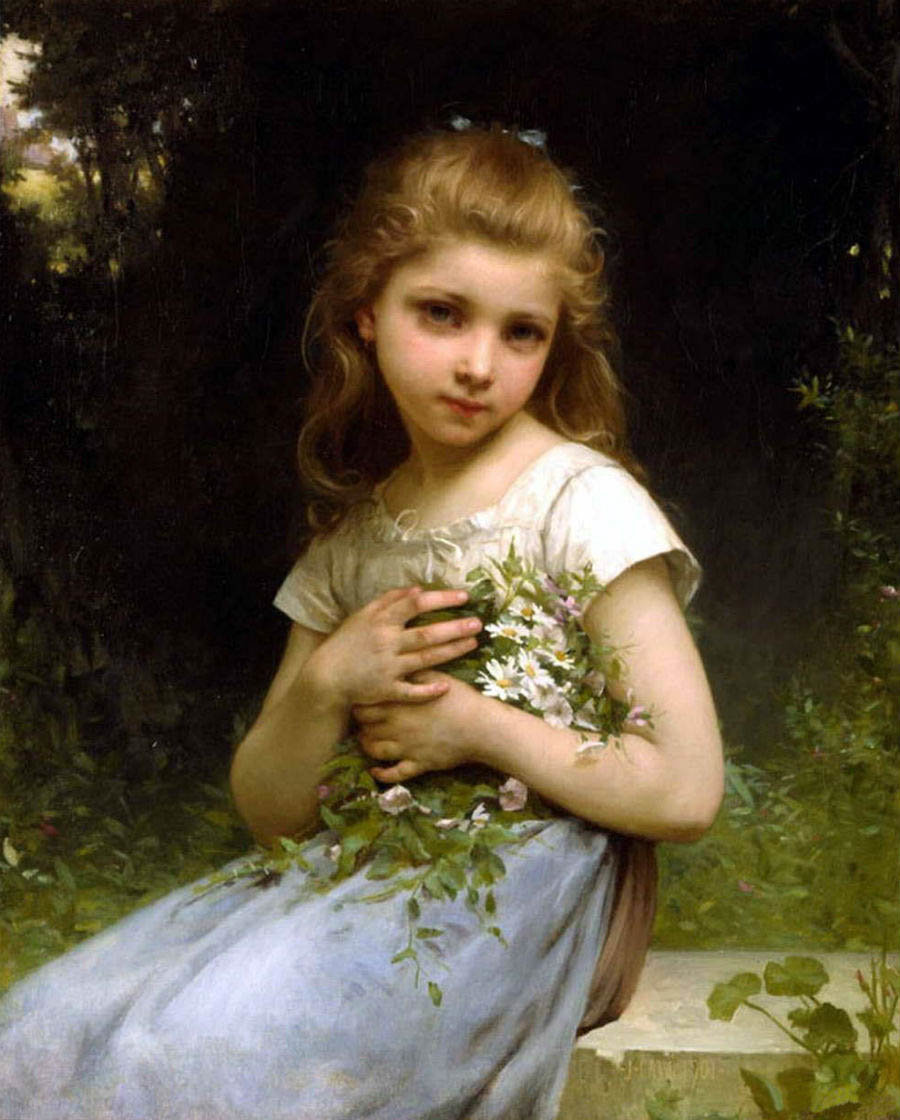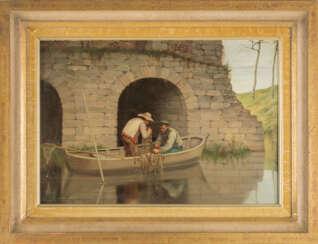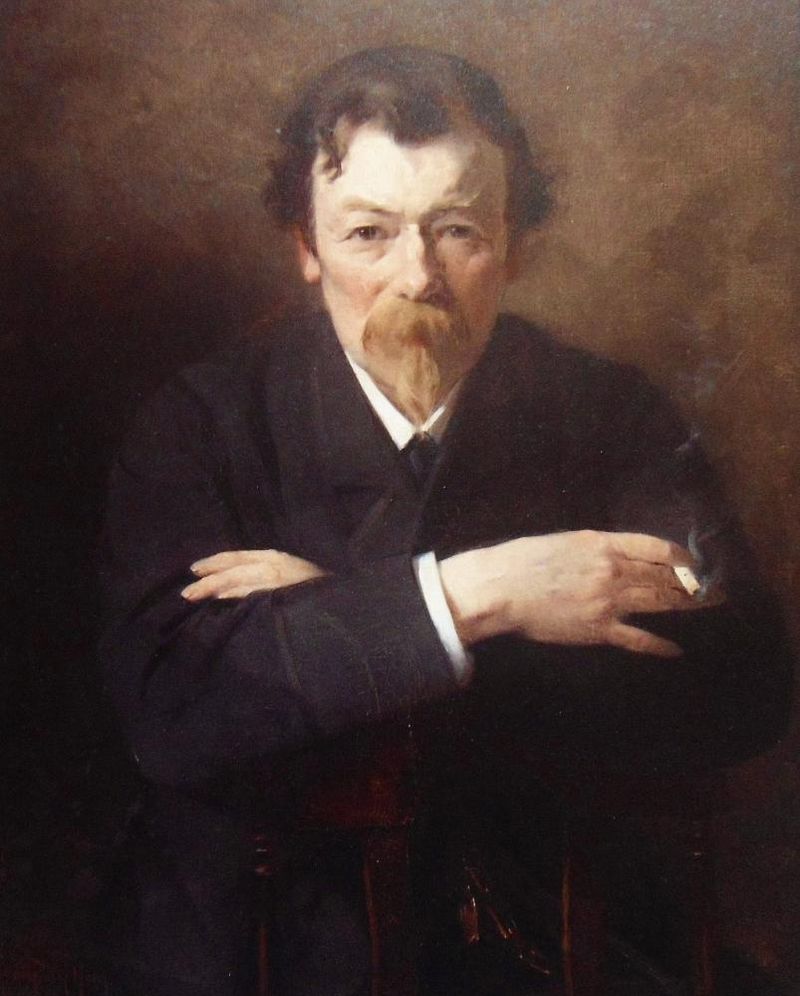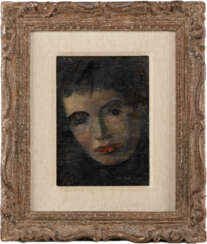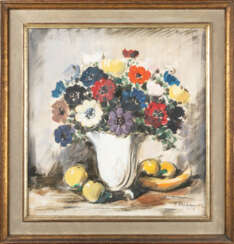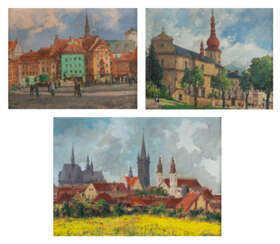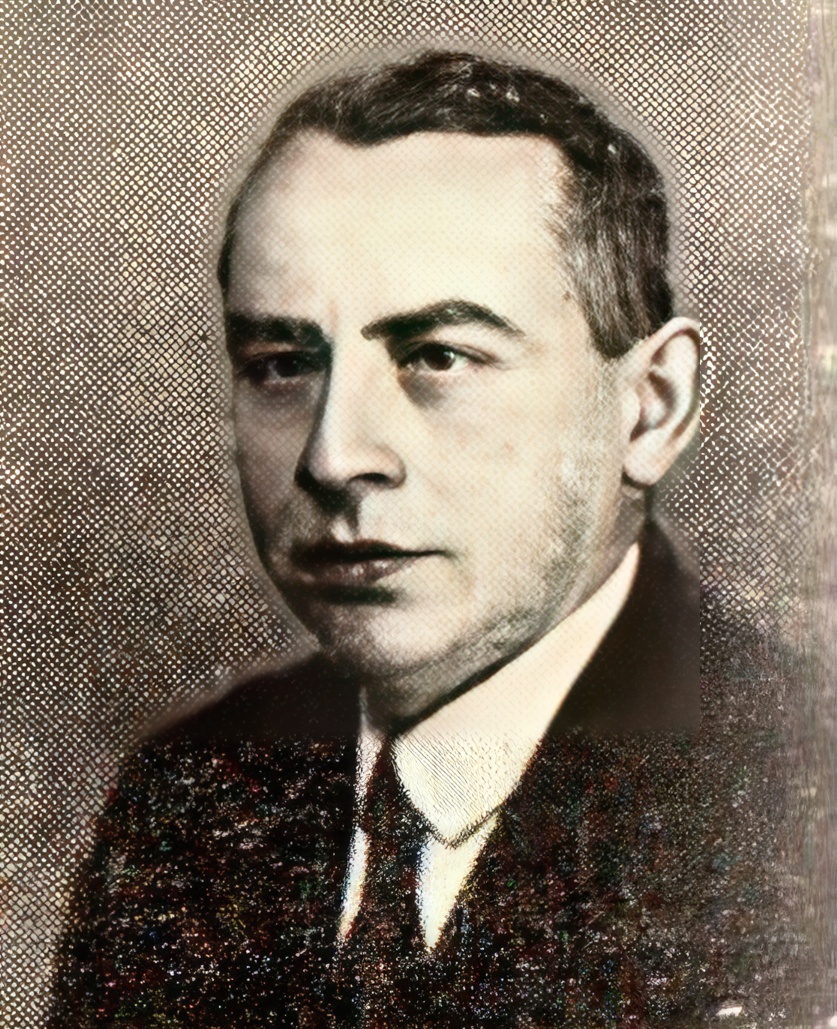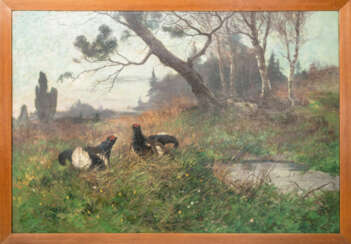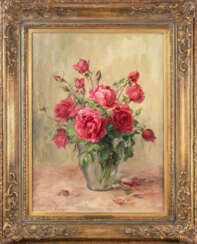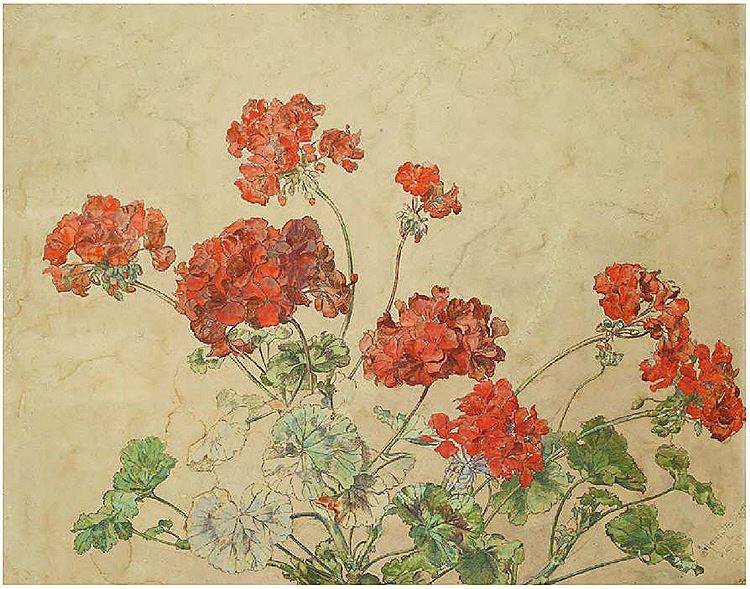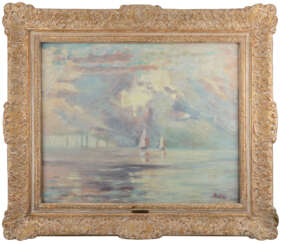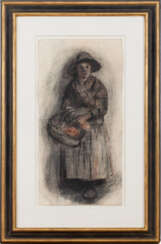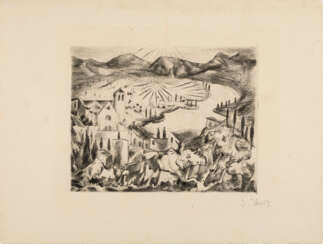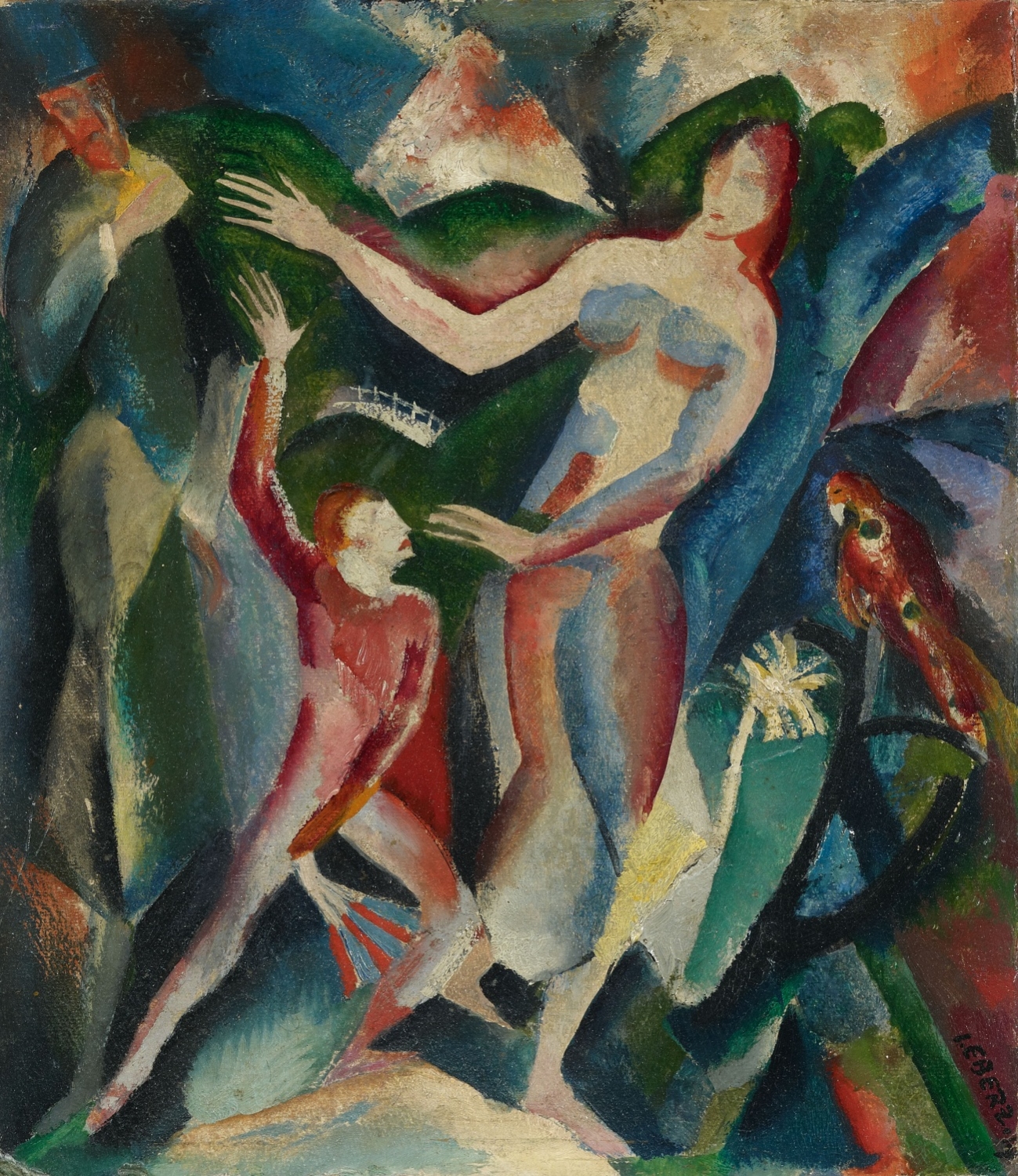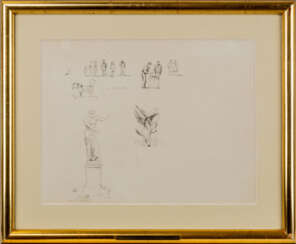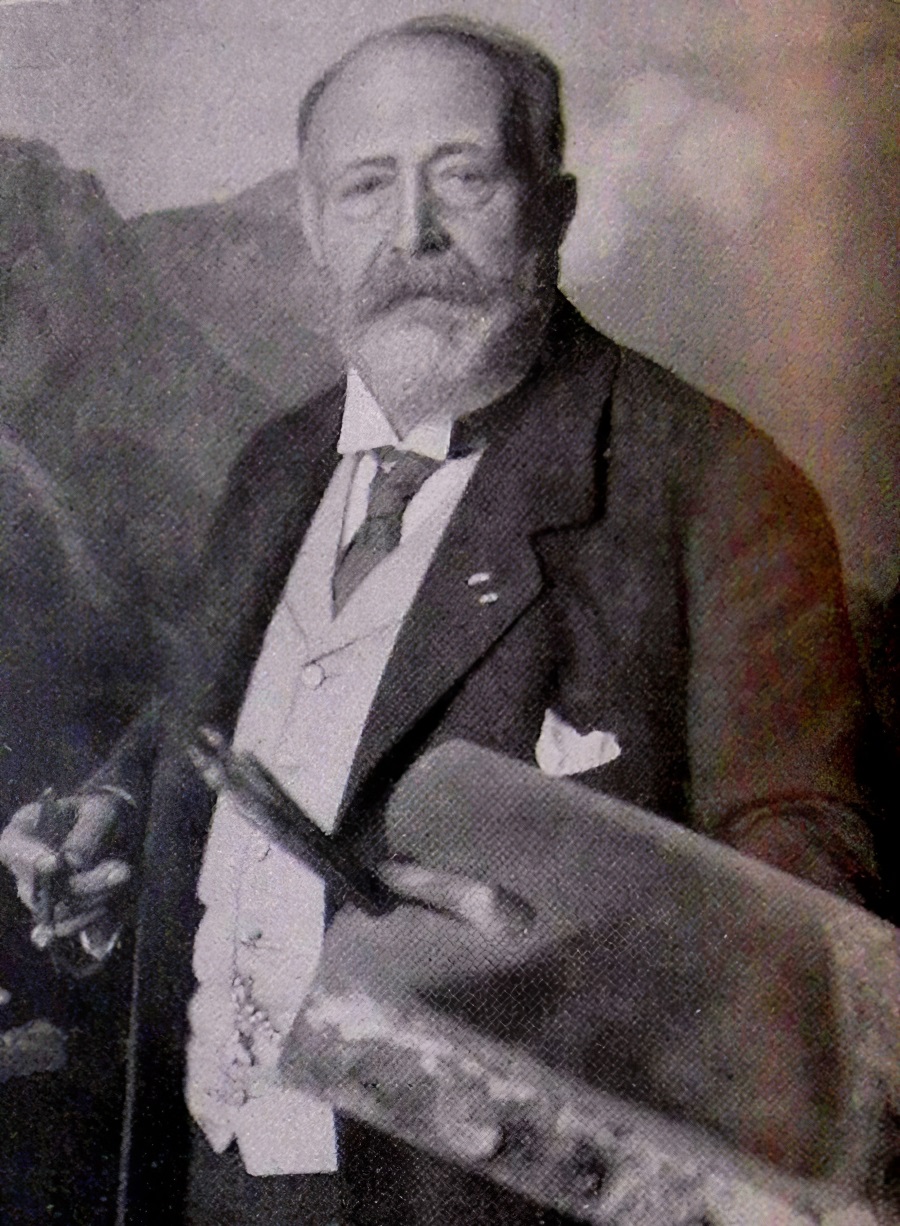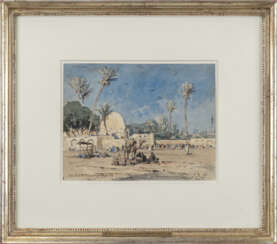
116: Kunst des 19. & 20. Jahrhunderts
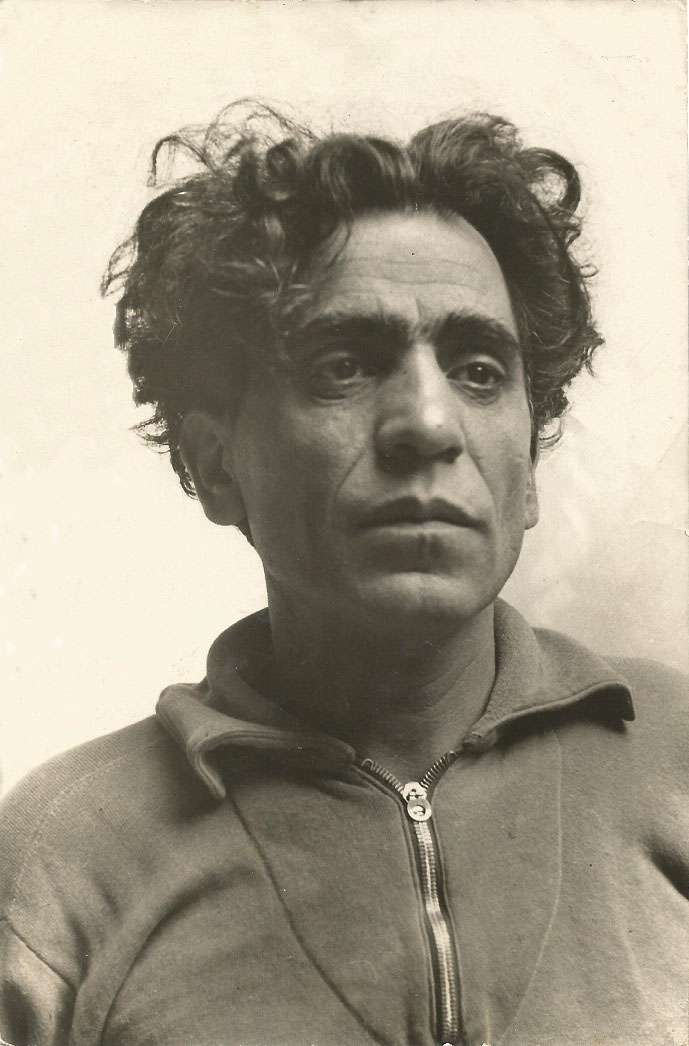
Jussuf Abbo, originally Jussuff Abbu, was a Palestinian-Jewish artist active mainly in Germany.
In 1937 in Germany his work had been branded as "Degenerate Art" and removed from all public museums. Much of the work removed was later destroyed by the Nazi regime.
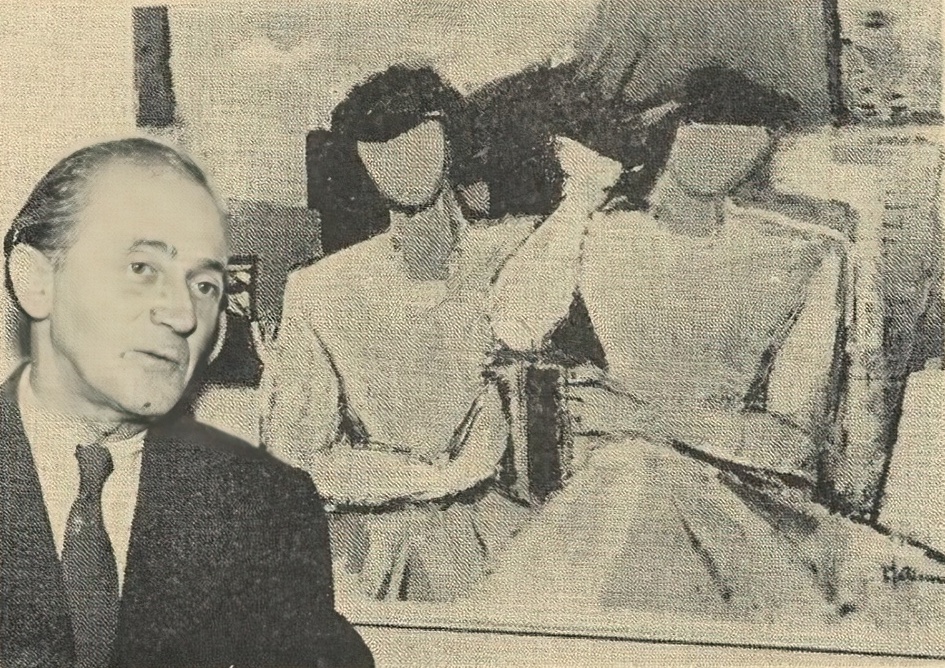
Carl Altena was a German painter. Carl Altena attended the Düsseldorf Art Academy from 1912 and took lessons from Prof. Willy Spatz (1861-1931). In 1914 he was drafted for military service and was taken prisoner in England in 1917. After his release, he settled in Mülheim an der Ruhr in 1919, became self-employed in 1925 and worked as a freelance artist from then on.
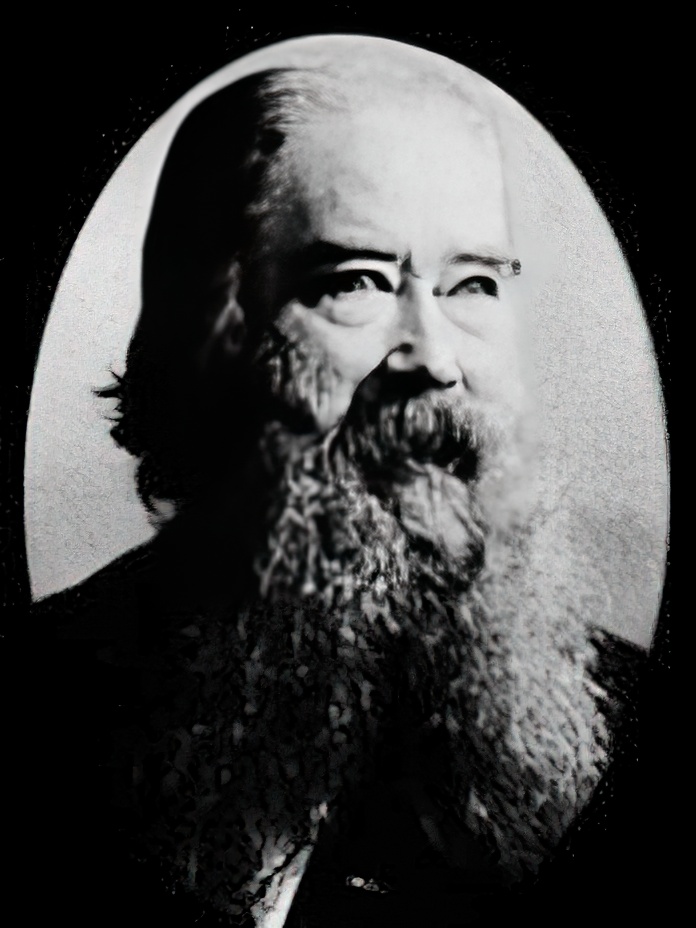
.jpg)
Ernst Heinrich Barlach was a German expressionist sculptor, medallist, printmaker and writer. Although he was a supporter of the war in the years leading to World War I, his participation in the war made him change his position, and he is mostly known for his sculptures protesting against the war. This created many conflicts during the rise of the Nazi Party, when most of his works were confiscated as degenerate art. Stylistically, his literary and artistic work would fall between the categories of twentieth-century Realism and Expressionism.
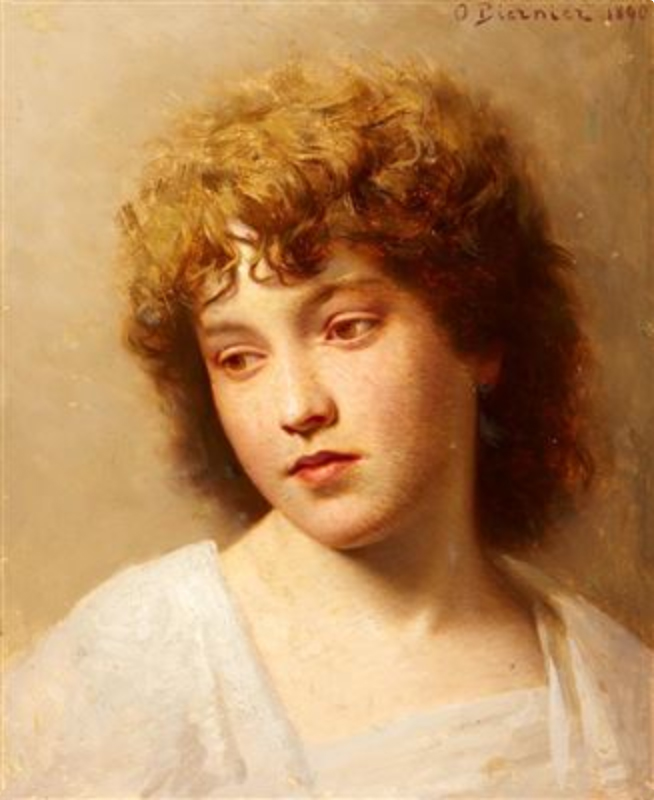
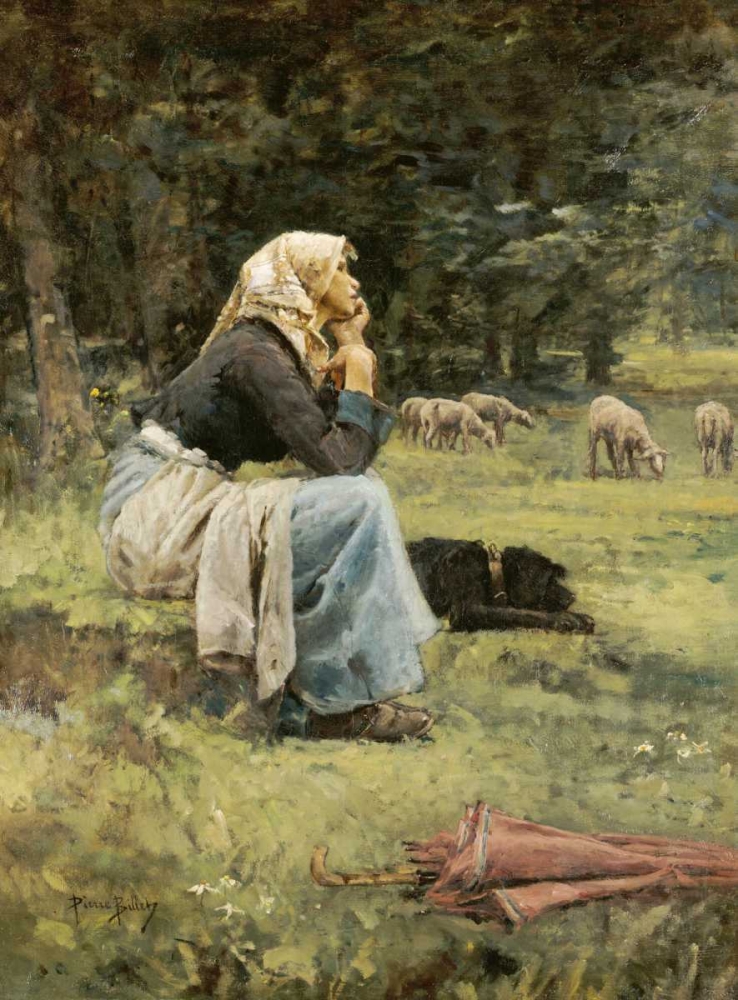
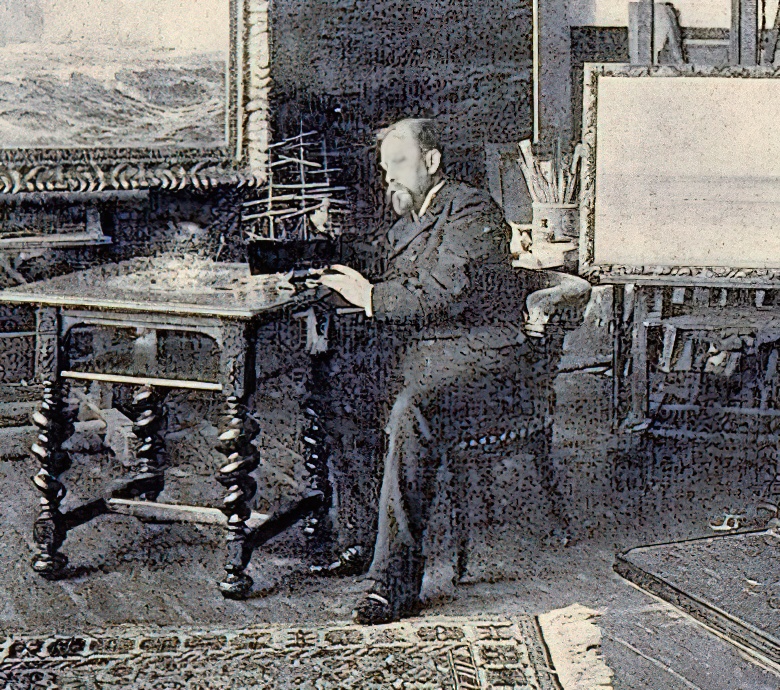
Hans Bohrdt was a German marine painter and graphic artist. Bohrdt's journey into marine painting began after a visit to the Hamburg port at the age of 15, sparking a lifelong passion for the sea and maritime subjects. Unlike many artists of his time who had formal art education, Hans Bohrdt was largely self-taught, although he did attend the Academy of Fine Arts in Berlin for a period. His dissatisfaction with the conventional training led him to pursue a more hands-on approach to his art, focusing on seascapes and marine life.
Hans Bohrdt's work gained significant recognition during the Wilhelmine era, making him a celebrated figure in German marine painting, a genre that became particularly prominent after the unification of Germany in 1871. His close relationship with Kaiser Wilhelm II, who was an admirer and patron of his work, helped elevate Bohrdt's status further. Bohrdt's art was known for its technical skill, particularly in depicting the majesty of the sea and the vessels that traversed it. His pieces often featured German naval prowess and were used for both private collections and public display, contributing to national pride and naval propaganda, especially during World War I.
The legacy of Hans Bohrdt is marked by his ability to capture the spirit and grandeur of maritime life, making him a significant figure in the history of German art. Despite the challenges posed by the world wars, which led to the loss of many of his works including his best-known painting, "Der letzte Mann" ("The Last Man"), Bohrdt's art continues to be celebrated for its contribution to marine painting. In 1995, on the fiftieth anniversary of his death, a memorial exhibition was held, showcasing his contributions to the field and reaffirming his place as one of the last great marine painters.
For collectors and experts in art and antiques, Hans Bohrdt's work offers a unique glimpse into the development of marine painting in Germany, reflecting both the beauty of the maritime world and the historical context of his times. To stay informed about sales, auction events, and updates related to Hans Bohrdt's work, signing up for newsletters from galleries and auction houses specializing in maritime art and antiques is recommended. This ensures enthusiasts and collectors are well-informed about opportunities to acquire pieces by this distinguished artist.
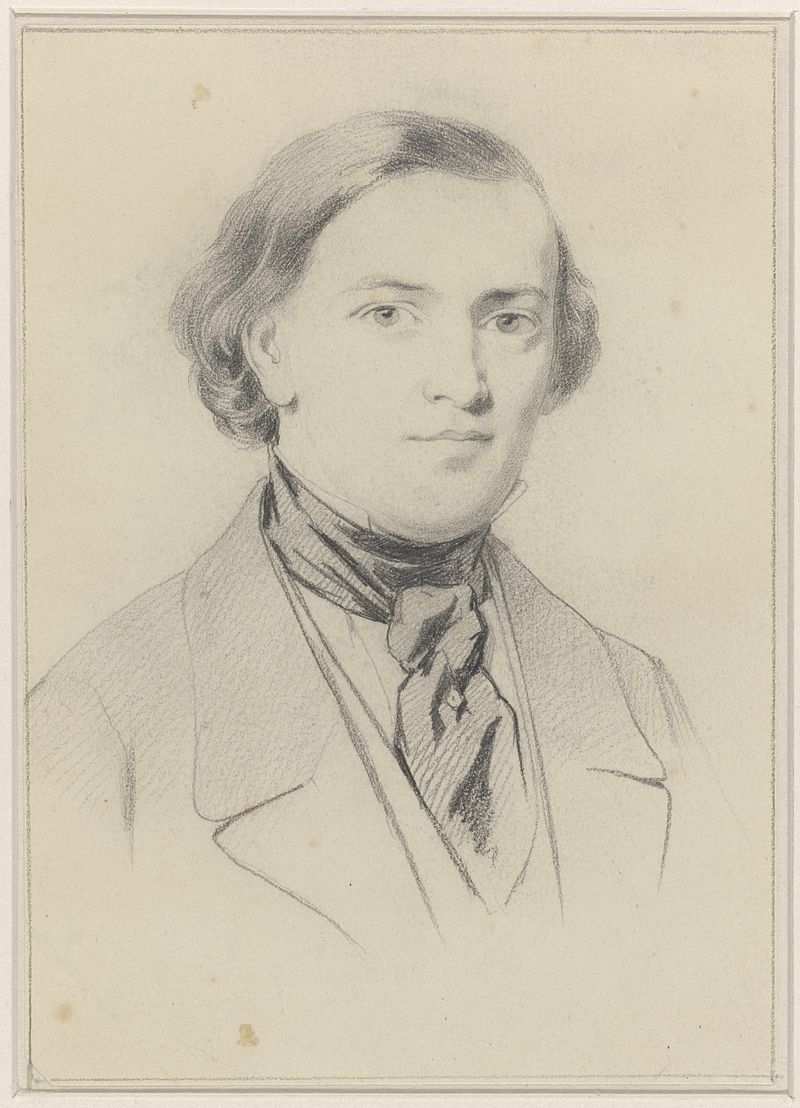
Elias Pieter van Bommel was a Dutch painter of the 19th century. He is best known as a master of the urban landscape.
Some of his works are of historical significance, in particular for the detailed and authentic way in which he depicts historic buildings and structures.
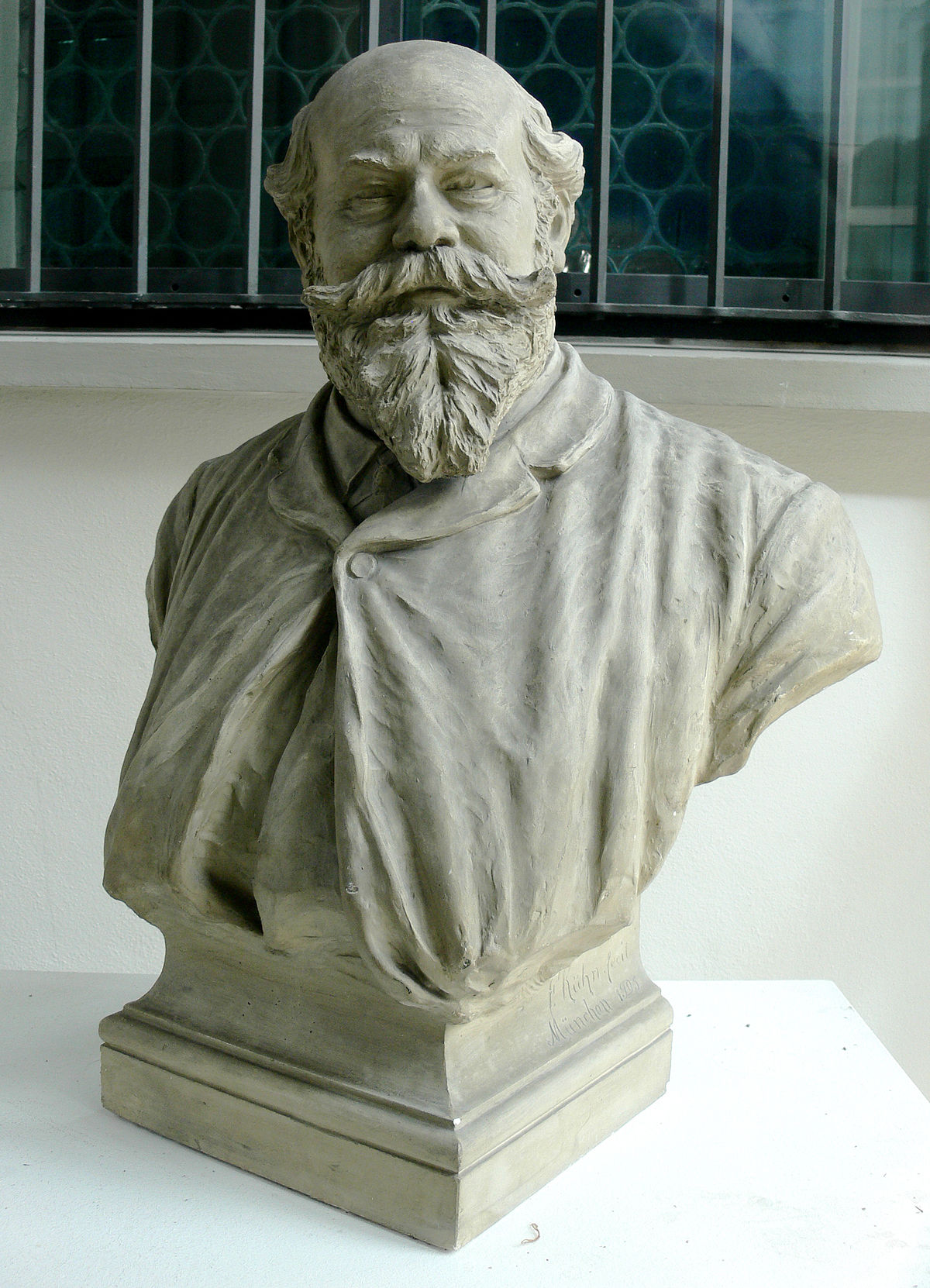
Anton Braith was a German painter of the second half of the nineteenth and early twentieth centuries. He is known as a painter, landscape painter and animalist.
Anton Braith was active for a total of 53 years. His creative path consists of four periods. At first, the artist imitated Dutch painting, then specialized in portraits of animals surrounded by nature. Between 1874 and 1894 he produced his most outstanding works, characterized by vividness and drama. In his last years he focused on animal scenes in mountain meadows, gradually retiring from active artistic endeavors.
Braith was professor of painting at the Munich Academy of Painting and an honorary member of the Royal Academy of Fine Arts Munich.
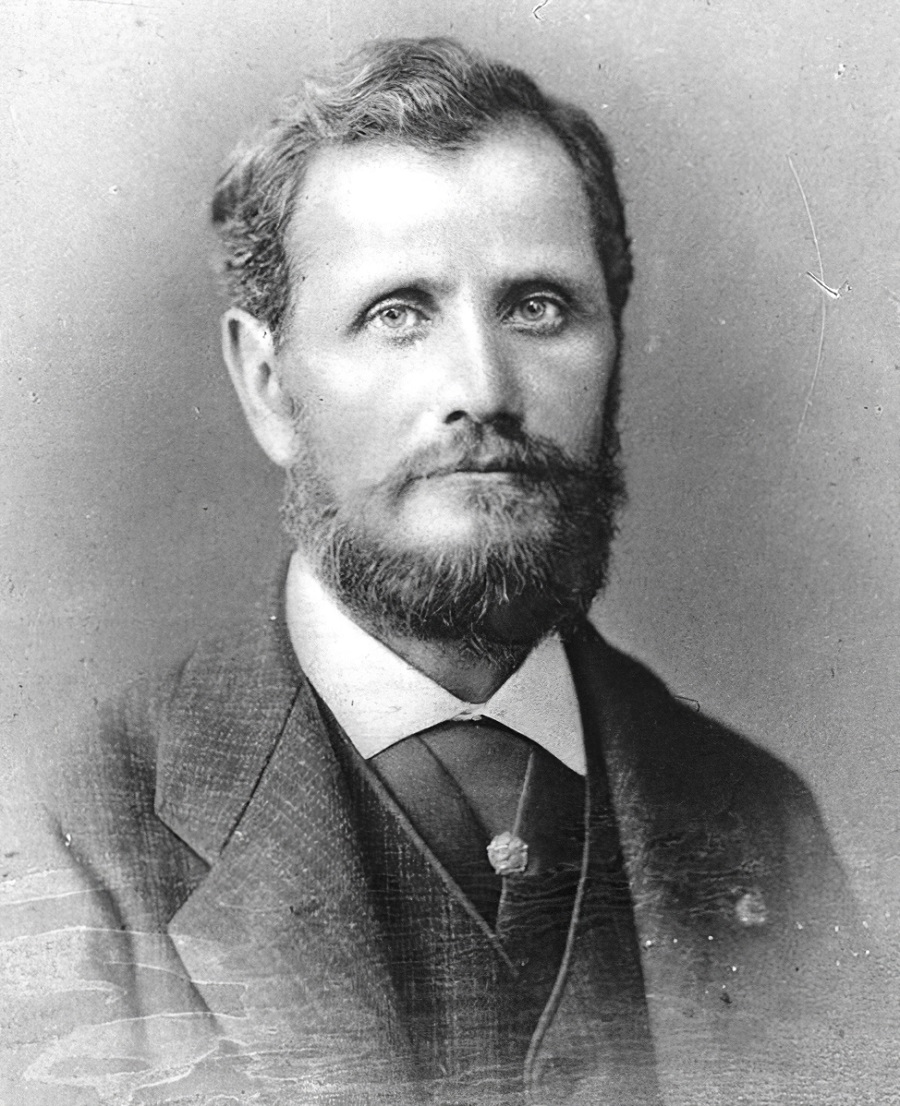
Stanisław Chlebowski was a Polish orientalist painter.
His travels in the Middle East and North Africa, where he lived and worked for many years, had a great influence on Chlebowski's work. His paintings often feature scenes of daily life in these regions, including depictions of markets, street scenes, and traditional clothing.
Today, Chlebowski's paintings can be found in many public and private collections, including the National Museum in Warsaw and the National Museum in Krakow.
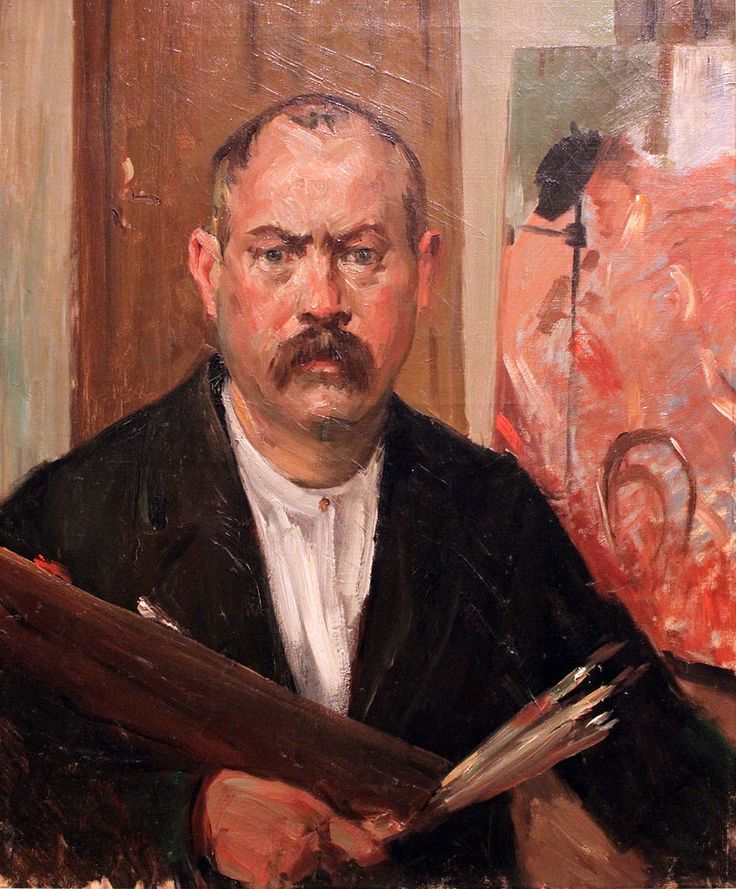
Lovis Corinth was a German artist and writer whose mature work as a painter and printmaker realized a synthesis of impressionism and expressionism.
Corinth studied in Paris and Munich, joined the Berlin Secession group, later succeeding Max Liebermann as the group's president. His early work was naturalistic in approach. Corinth was initially antagonistic towards the expressionist movement, but after a stroke in 1911 his style loosened and took on many expressionistic qualities. His use of color became more vibrant, and he created portraits and landscapes of extraordinary vitality and power. Corinth's subject matter also included nudes and biblical scenes.
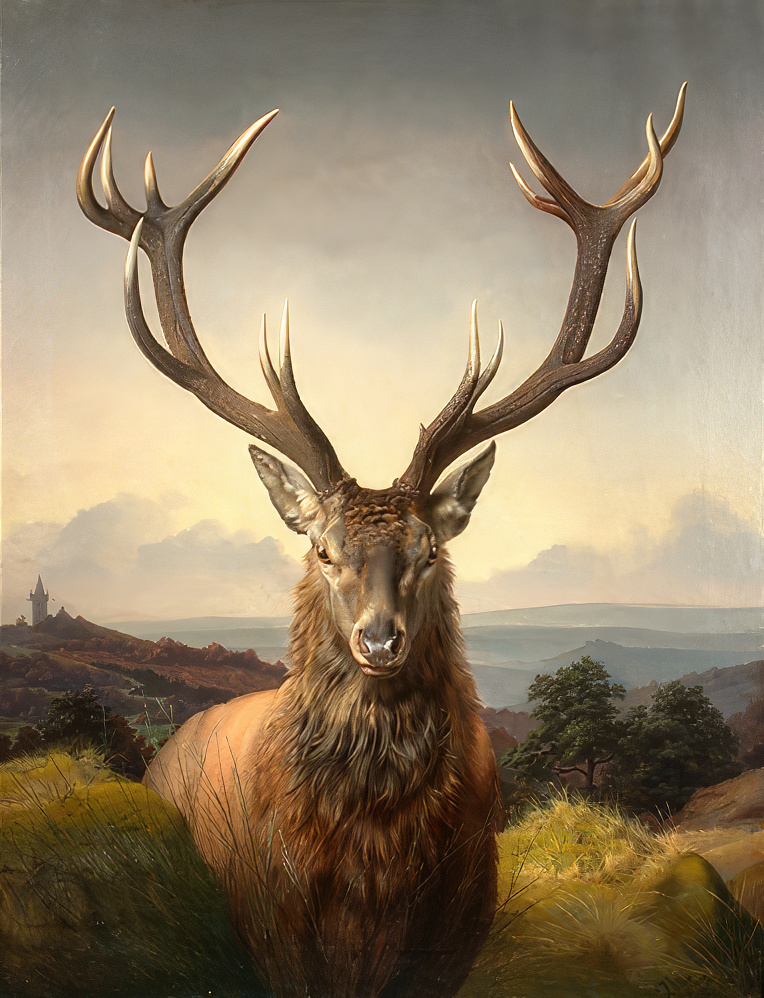
Carl Friedrich Deiker was a German animal painter.
He depicted with particular interest the wild animals of Germany - deer and wild boar; battles between male deer, broods of wild piglets escaping from hunters. Some of his canvases are devoted to birds of prey - falcons, hawks as well as grouse, grouse; the life of foxes, hares and other animals and birds. The painter also illustrated animal scenes in art magazines and hunting literature.
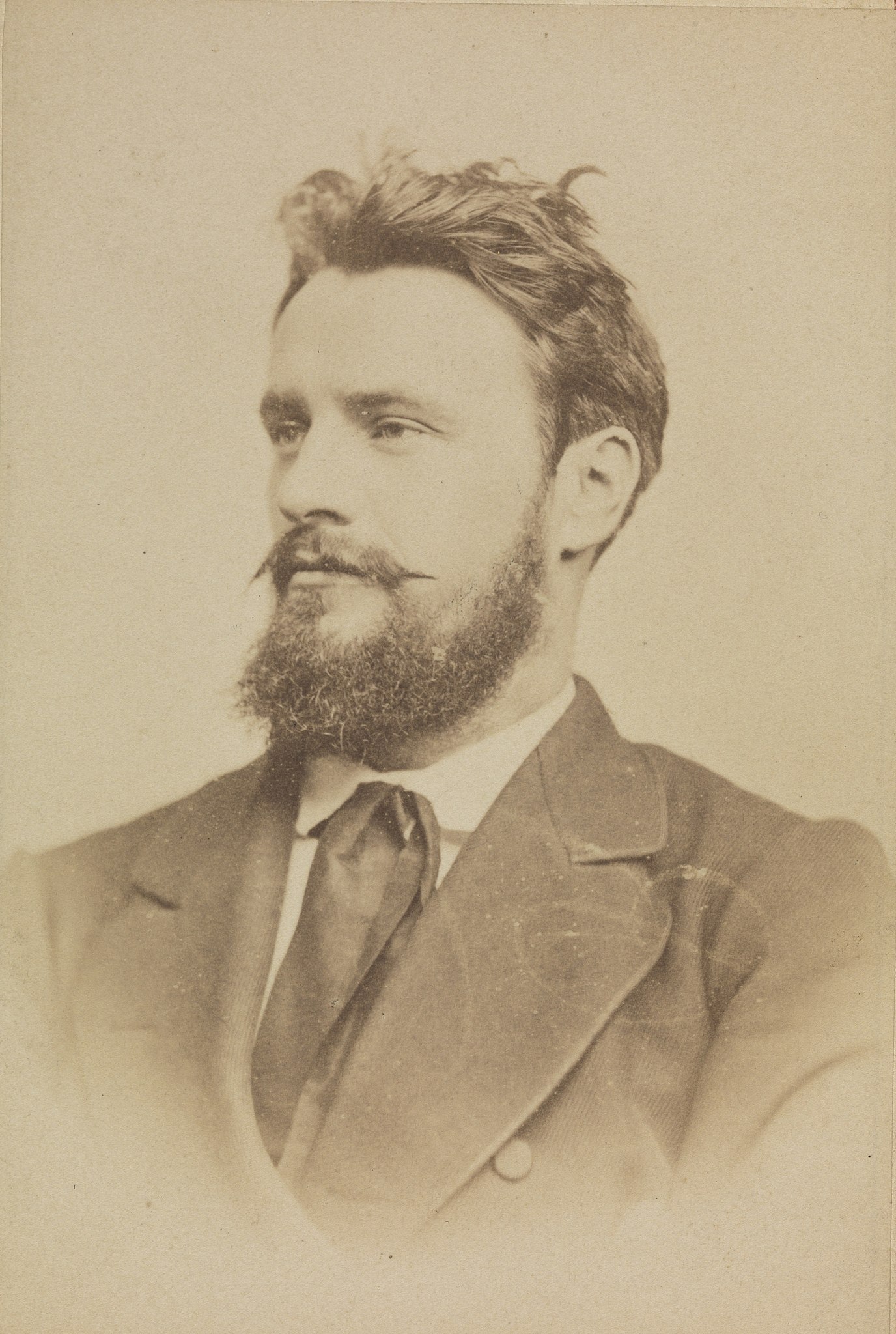
Karl Edvard Diriks was a Norwegian painter.
He is known for his naturalist outdoor paintings of clouds, rain squalls, snow flurry, storms and rough seas. He is represented with thirteen works in the National Gallery of Norway, in a number of other Norwegian galleries, and in galleries in France and Germany. He was decorated Knight, First Class of the Order of St. Olav, and Officer of the French Legion of Honour in 1920.
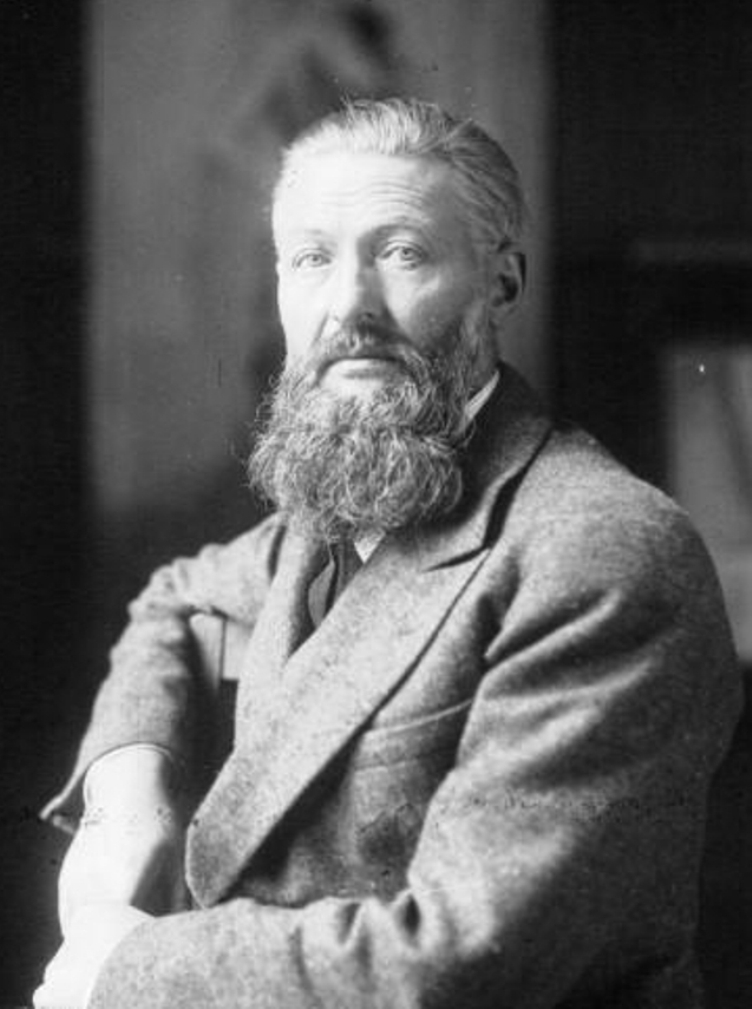
Kees van Dongen was a Dutch-French painter renowned for his vivid and expressive works that placed him at the forefront of the Fauvist movement. Born in 1877 in Delfshaven, Netherlands, van Dongen's journey into the art world began with his education at the Akademie voor Beeldende Kunsten in Rotterdam. His move to Paris in 1897 marked a pivotal moment in his career, immersing him in the bustling avant-garde scene and connecting him with influential circles, including Pablo Picasso and the Fauves. Van Dongen's art, characterized by its striking use of color and bold brushwork, captured the essence of his subjects with a unique blend of realism and abstraction.
Van Dongen's work evolved significantly over time, initially influenced by the dark tones of his Dutch heritage and the works of Rembrandt. His encounter with Fauvism around 1906 brought a dramatic shift towards brighter, more vibrant colors, marking his most iconic phase. His ability to capture the sensuousness and personality of his subjects made him a sought-after portraitist among the French bourgeoisie and celebrities of his time. Notable works include "Femme aux bas noirs" (Woman with Black Stockings), "Les lutteuses" (Lutteuses du Tabarin), and "The Dancer Anita," showcasing his fascination with the human figure, particularly sensuous depictions of women.
Beyond his remarkable contributions to Fauvism, van Dongen's ventures into illustration and his role as a society portraitist underscore his diverse talents and adaptability to the changing tastes of the art market. His works are celebrated in major collections worldwide, including the Hermitage Museum and the National Gallery of Denmark, affirming his lasting impact on the art world.
Collectors and art experts continue to appreciate van Dongen's work for its bold experimentation with color, form, and the evocative portrayal of his subjects. His legacy lives on as a testament to the vibrancy and dynamism of early 20th-century modern art.
For those keen to explore van Dongen's captivating works further and stay informed about new discoveries, exhibitions, and auction events related to his art, signing up for updates is a must. This ensures direct access to the latest sales and scholarly insights into the painter's rich oeuvre, a valuable resource for collectors and enthusiasts alike.
